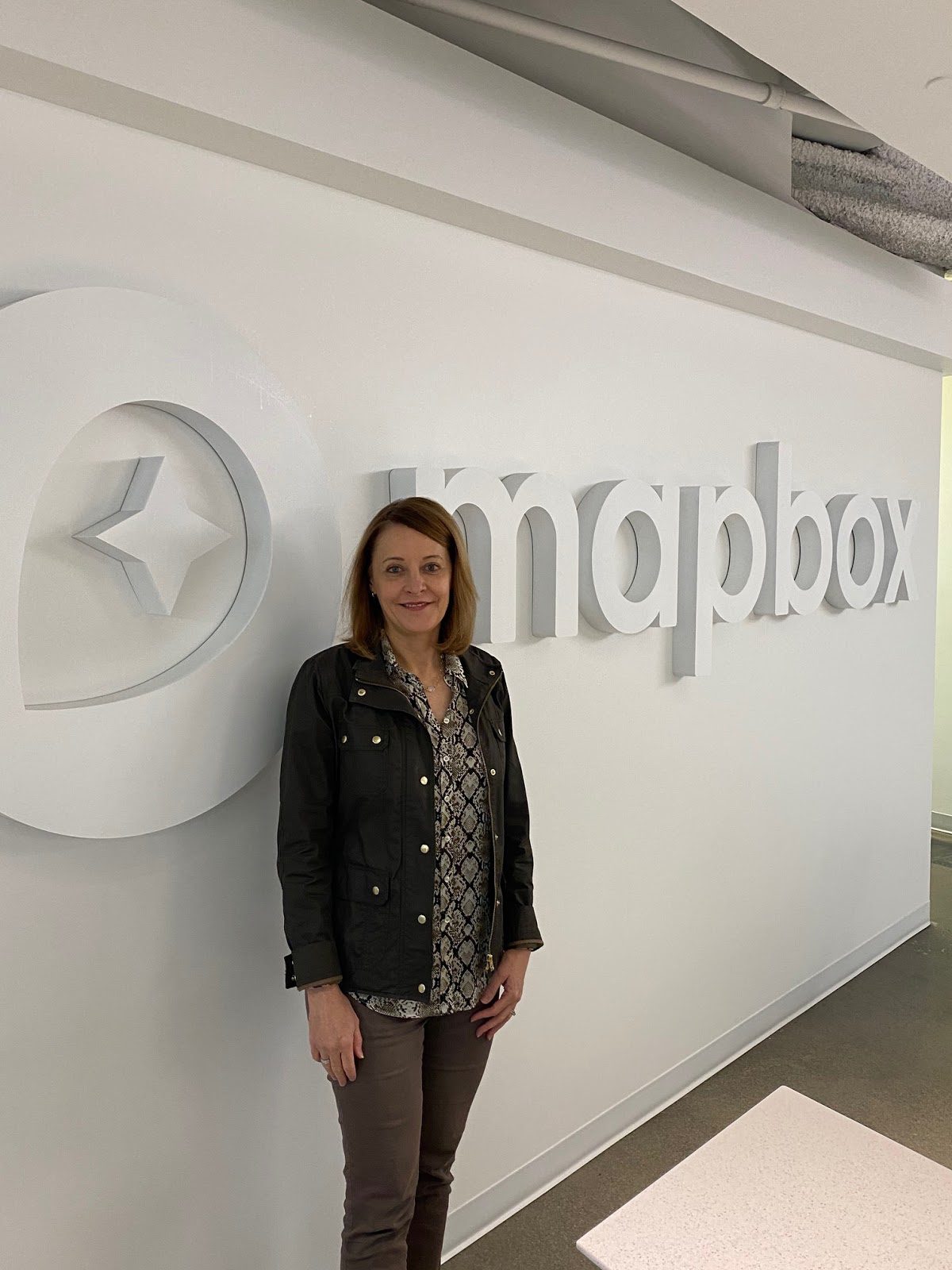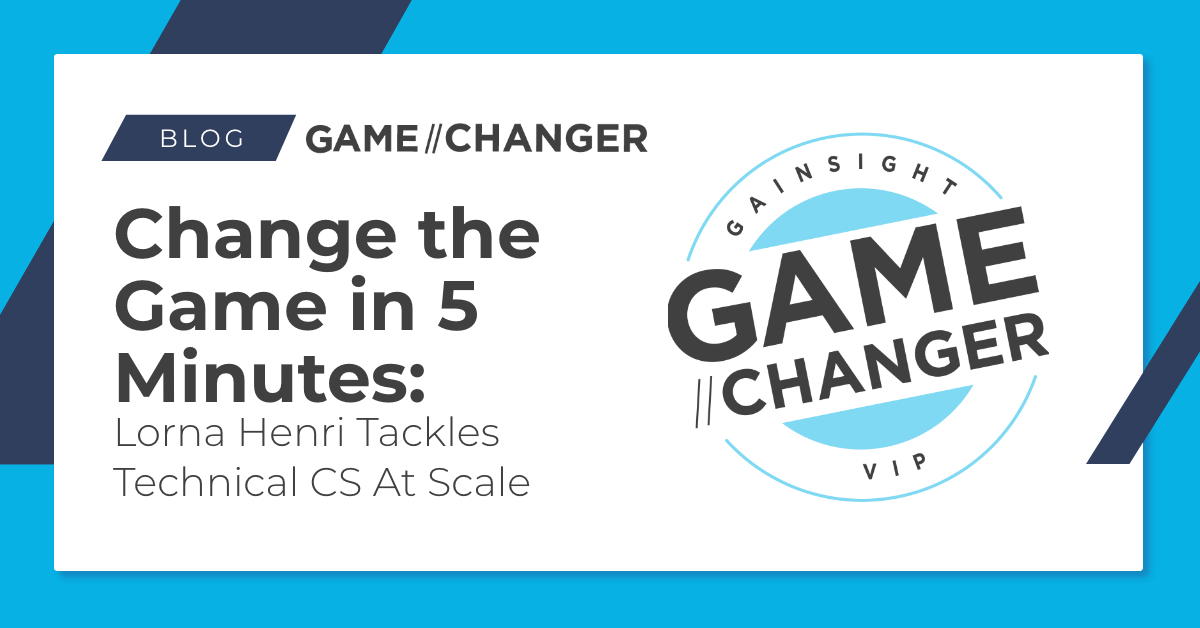
Welcome to our Change the Game in 5 minutes Series. Today I’m chatting with Lorna Henri, a customer success trailblazer and Global Vice President of CS, TAM, and Support at Mapbox. I wanted to talk with Lorna about hiring rockstar CSM and TAMs who are personable enough to build relationships and technical enough to know the product inside and out. After all, isn’t that every CS leader’s dream?
Nick: Hi Lorna! I can’t wait to pick your brain about creating CS success. But let’s kick things off with this question: In an alternate universe, what would be your chosen career?
Lorna: Good question! I’d be a teacher. Teaching offers a great combination of constantly learning and interacting with people from different backgrounds. For me, the intersection of those two areas is really satisfying.
Nick: I think that might explain how you ended up in customer success! Now, let’s dig in. Why did you need to change the game?
Lorna: Mapbox had grown to a certain level and was starting to attract and sell to larger and larger customers. The core user of Mapbox is often a highly technical developer, and Mapbox has phenomenal documentation. That all leads to a lot of self-service, tinkering, and experimenting, which in turn leads to high-growth potential sales at innovative companies like Facebook, Strava, Tableau, and Snap.
In fact, initially, Facebook’s developers had been playing around with the Mapbox product on the weekends and realized how easy and powerful it is. Over time, our platform tends to expand organically at a company—but it also can reach a point where the budget is high. That means budgetary stakeholders outside the core users and teams need to understand the value is really high too.
Nick: That’s when things can get complicated, right? What implications does this scenario have for the Mapbox CS team?
Lorna: It means our customer success team needs to be highly technical so they can understand and speak to developers on a code-base level. They also have to be able to talk to stakeholders to define and deliver ROI on a broader, strategic business level. Since Mapbox is a broad platform with a lot of use-cases and users, the team must be able to engage people at different levels over various product applications to help support and grow their footprint at the customer.
It’s a lot to think about! And it can’t be done at scale without process and technology.
Nick: You’re right about that. So, what operational changes did you make?
Lorna: Scaling can be the biggest challenge, especially with a small CS team. Luckily, I’d implemented Gainsight twice before in previous roles, and I’d learned it’s never too early for implementation, CS technology brings a level of rigor to the entire account life cycle process. We needed a system of record early on to plant the seeds for scale, since the bigger a company gets, the harder it is to overcome inertia and a status quo that used to work, but no longer does.
I also knew I needed to put a “crawl-walk-run” strategy in place. Before Gainsight, our CS teams relied on notes in Github, Evernote, Microsoft Word, Google Docs, Dropbox—you name it. Those notes were incredibly valuable, but they weren’t centralized. Playbooks, templates, and best practices all needed some standardization, too. My goal was an 80/20 split—80% are standardized, and 20% can be customized case-by-case.
Nick: Whew, that’s a lot to think about. How did Gainsight help you change the game?
Lorna: I’d implemented Gainsight before, but I still wanted to explore all the options to make the best decision for the business. I did an objective analysis of 10 other solutions and assigned points to a variety of criteria to understand each platform’s strengths. One of the things I wanted to know was, can we just build this in Salesforce?
In the end, the best argument for using Gainsight’s platform was the same one Mapbox makes to our prospective customers who are looking at “make vs. buy”: It’s a dedicated team doing nothing but building best-in-class CS technology. At Gainsight, it’s all you do! We know what it’s like when companies try to build out Mapbox’s functionality rather than leave it to the professionals. It takes far more resources than initially estimated and even then, never works as well as you thought it would. Following that logic, it just made sense to choose Gainsight.
Gainsight’s Timeline is another big advantage. Salesforce has a bunch of text fields but when you try to report out, the text columns are one inch wide and pages long. It is completely unusable. Formating matters. With Gainsight, it is much easier to search for and digest content. It helps me prioritize my own work, too.
Nick: I love it! Did your team have any issues along the way?
Lorna: Like many smaller, rapid-growth companies, at Mapbox, our challenge was getting usage data into Gainsight. Because of other priorities on the backend, it took us a year to get the resources to do it. The good news is that even without usage data integrated, we were able to build a very robust picture of account health. It included TAM activities, success KPIs and product issue tracking. We also built-in qualitative data, relationship data, and champion-identification and creation. TAMs and CSMs are closest to the customer and intuitively understand account health. Manual tracking and input from your CS team is extremely helpful and provides deep insights even if you don’t have usage automation and predictive modeling in place.
These days, we have a much better, more automated picture of account health that includes usage data. It shows up in our Customer360, and we reference it throughout our Timeline. We’ve also automated outreach, and our entire team has expansion and QBR Playbooks. I’ve built a one-to-one dashboard for each TAM that I review in weekly meetings, too.
For us, it’s been a complete game-changer for adoption. And the value doesn’t end with the technology. Things change all the time, and it’s incredibly helpful to get support from Gainsight’s massive customer success community and network. For example, Mapbox is a consumption-based business, and Gainsight helped us connect with other consumption-based customer success leaders and find out what key metrics they measured and how they drove expansion and adoption with their customers.
Nick: Lorna, do you have any results you can share?
Lorna: We are tracking our customers’ goals and completed customer outcomes and measuring the impact that has on usage. Having a structured system and processes enables us to do this with a large customer base. We’ve also had incredible internal adoption among their TAMs, and the one-to-one dashboard is a big part of that. But it’s also about keeping things simple and centralized on key mechanics at each phase of the lifecycle. We identified a few simple, key playbooks and didn’t overwhelm the team with too many at the start. Gainsight is powerful, but you don’t want to launch everything all at once. As a result, we’ve seen a big productivity and impact improvement because the team can focus on the right things, not just the “squeaky wheel.”
The other big change is in pattern recognition. Now we can visualize not just each account but the book of business as a whole, as well as the actions and effectiveness of each CSM. That lets us quickly start to identify the impact of those actions on overall health and, ultimately, on revenue. We can see if one CSM has a bunch of green accounts and support them by asking, what are you doing to create such healthy accounts, what are the practices and how can we train the entire team?
Nick: Those are some inspiring words to end with, Lorna. Thank you for sharing your GameChanger insights and expertise with me today.
